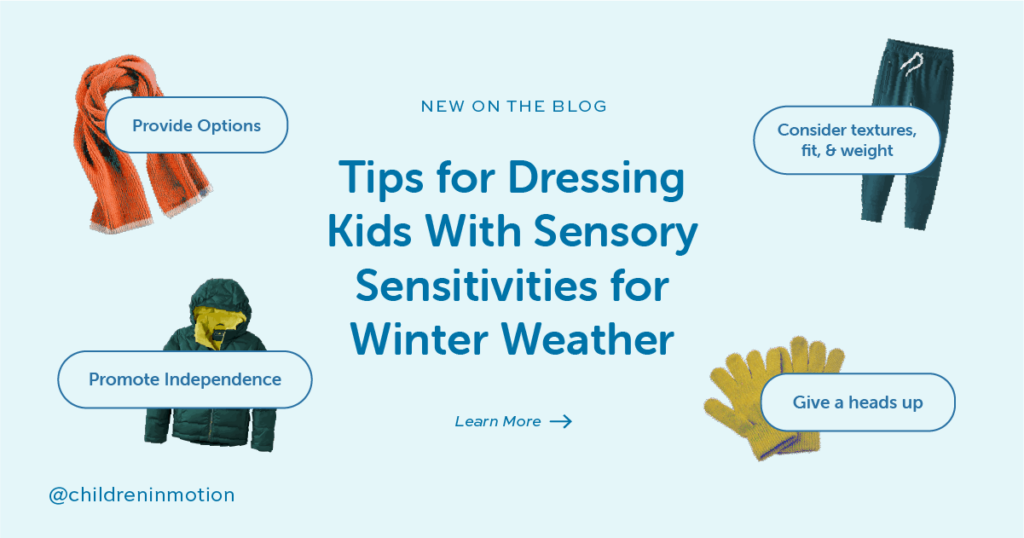4 Tips For Dressing Kids With Sensory Sensitivities For Winter Weather
Dressing kids with sensory sensitivities for winter weather can be quite challenging. Of course you don’t want your child to freeze when they go outside, but you also don’t want to have to fight with them every morning about wearing enough clothes to stay warm throughout the day. I hear you, so here are 4 tips for transitioning to winter clothes that just might help you avoid those early morning arguments –

#1 Provide Options
Instead of giving your child one and only one option for what to wear, try giving them two options. You could simply present it as “Which one, this one or this one?” or “Would you rather this or this?”. Giving them two to three choices will help them organize their thoughts and not get overwhelmed by all the potential options. Additionally, you giving them the final say on what to wear will make them feel like they chose to wear the outfit, not that they were forced to wear it, but because they chose it. You control the options, they control the outcome.
#2 Promote Independence
The more control your child has, the better they will feel about their clothing choices. If your child has fine motor challenges, it may be easier for your child to put on a pullover shirt instead of a button down shirt. Along the same lines, you may want to opt out of belts and zippers and go for an elastic waistband that is easy to pull up and down instead.
Sometimes socks can be really tight, which makes them hard to pull up completely, which could make the sock feel uncomfortable in shoes. In this case I would recommend looking for a style sock that has more give, maybe a short ankle sock instead of a crew sock. You could also try a slip-on shoe instead of a high top shoe.
#3 Consider Textures, Fit, & Weight
Some materials are stiff and rigid, making it hard to adjust. Your child may prefer a material that is slippery, soft, or pliable so that it is easy to adjust to their comfortability. Other materials can feel scratchy to your child. Perhaps a solution for this could be wearing a soft undershirt to make the scratchy material bearable.
As far as fit is concerned, some children like a loose fit while others like tight. Perhaps your child could wear leggings underneath their pants or skirt to make them more comfortable. Some children may be sensitive to weight as well. Your child might prefer a light weight jacket versus a thick bulky jacket. Or they might not like a super heavy cable knit sweater because it is too heavy. In that scenario perhaps you could think about a lightweight fleece sweater.
What it boils down to here is that it’s all about discovering your child’s unique preferences, and then making adjustments to accommodate them.
#4 Give Your Child A Heads Up
It’s always a good idea to talk to your child about the changes of season and prepare them for the changes in clothes ahead of time. You could approach this conversation like “Cold weather is coming soon and you will need to wear pants to stay warm, which pants do you like?”.
Shopping ahead of time and having new clothing on hand is also helpful for your child to see in their closet or dresser drawer. You could set up a trial run and have your child try on the clothes and see how everything feels “How do your socks feel with your shoes?” “This shirt could go with these pants, what do you think?”. Then, if something isn’t working you will have time to look for a better option.
Dressing kids with sensory sensitivities for winter weather can be challenging, but taking all of these things into consideration should significantly help. Just remember – be patient, give them the final say when you can, think about what it takes for them to put on their clothes, consider the textures, fit, and weight, and give them a heads up for the change that is coming. We have many more sensory resource available in our free resource library – check out the resources here!
Want to know more about sensory processing, self regulation, child development, & more? Our resource library is full of free crash courses, guides, and tools to help you understand more about your child & how you can support them outside of therapy.
Get your free resources!
show me the resources